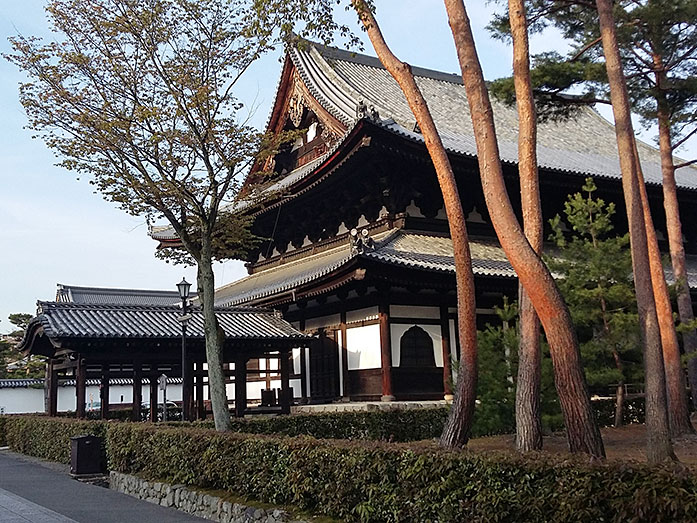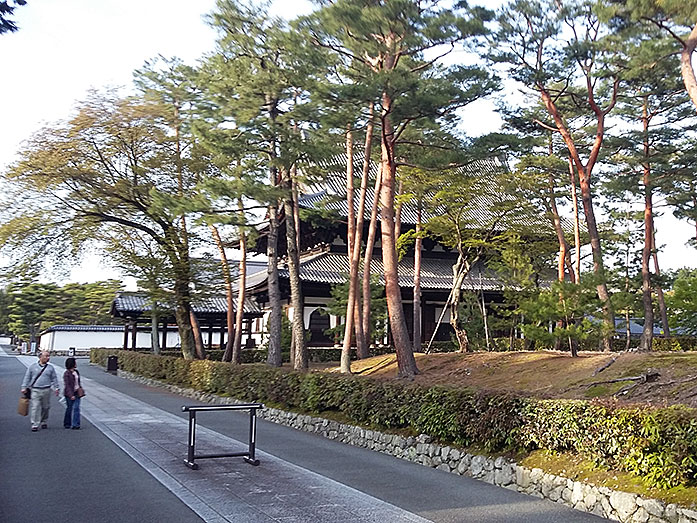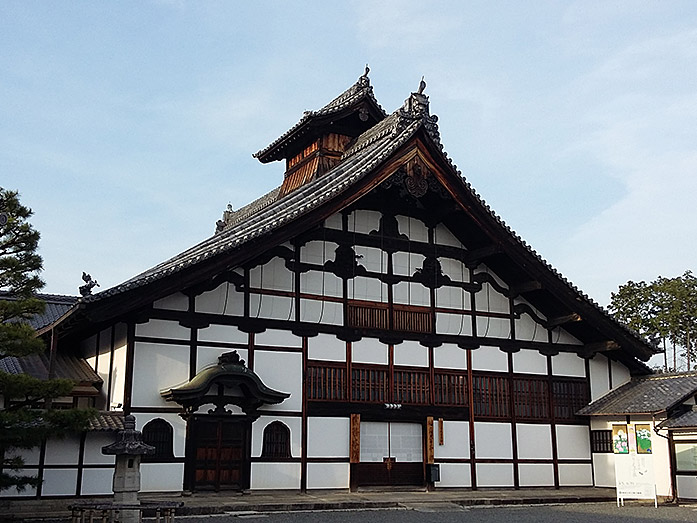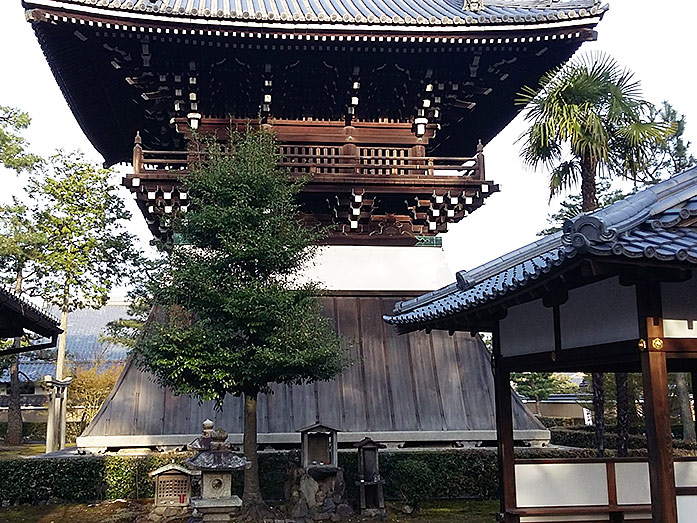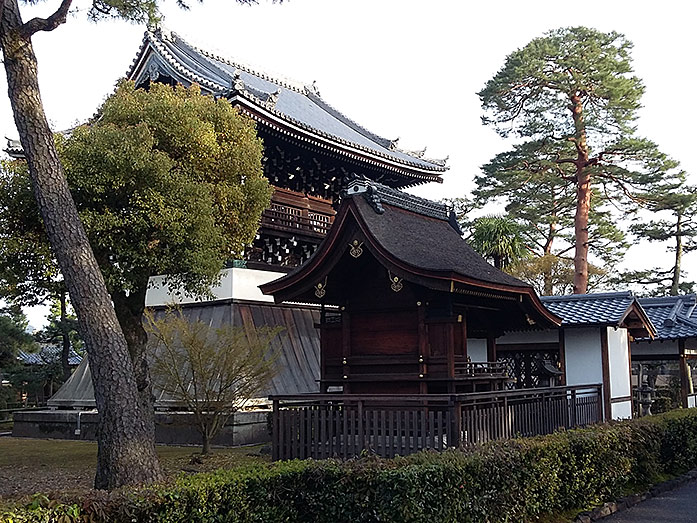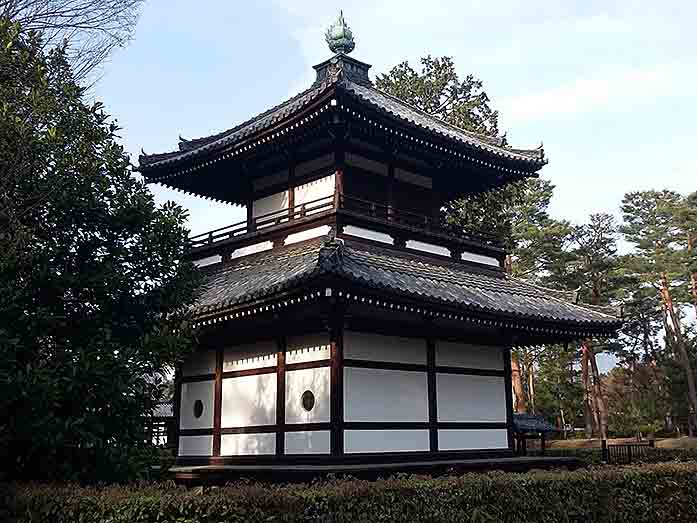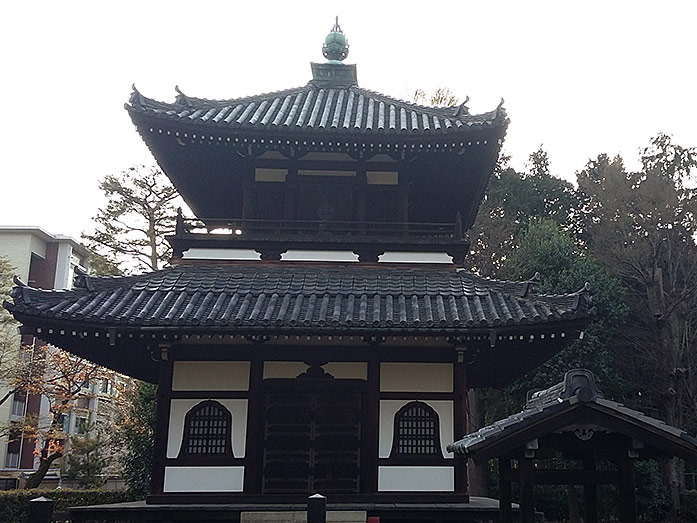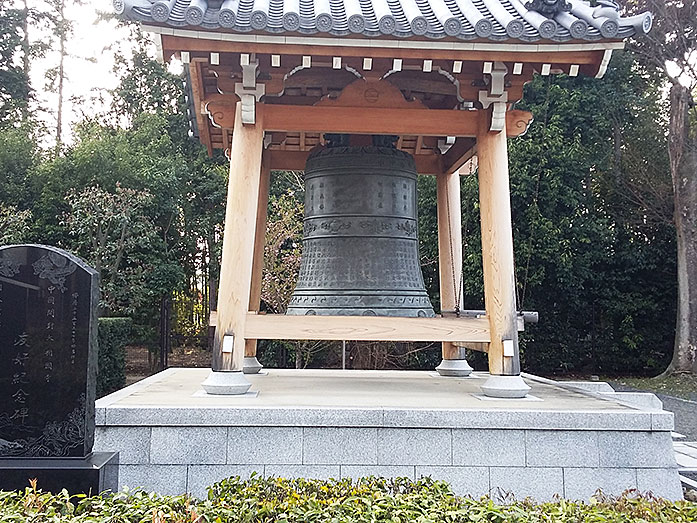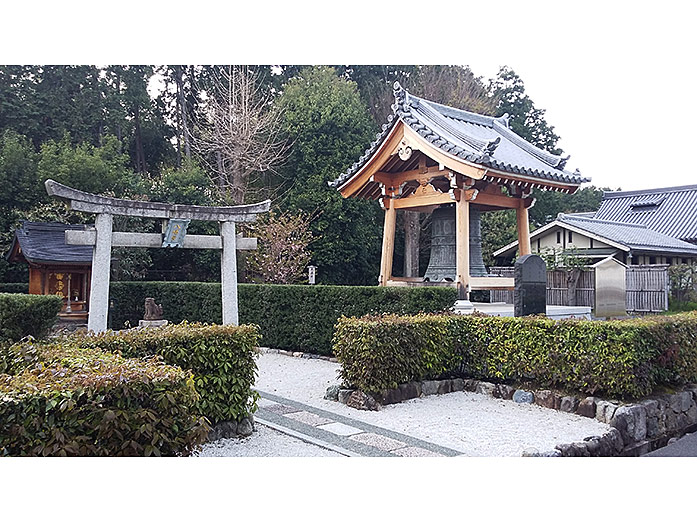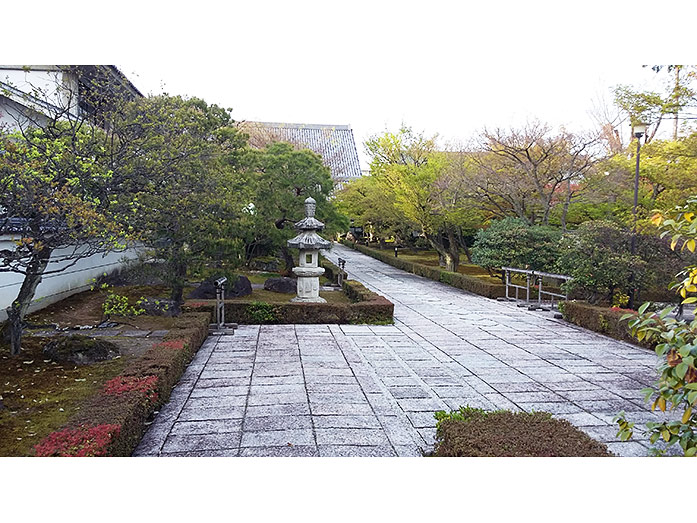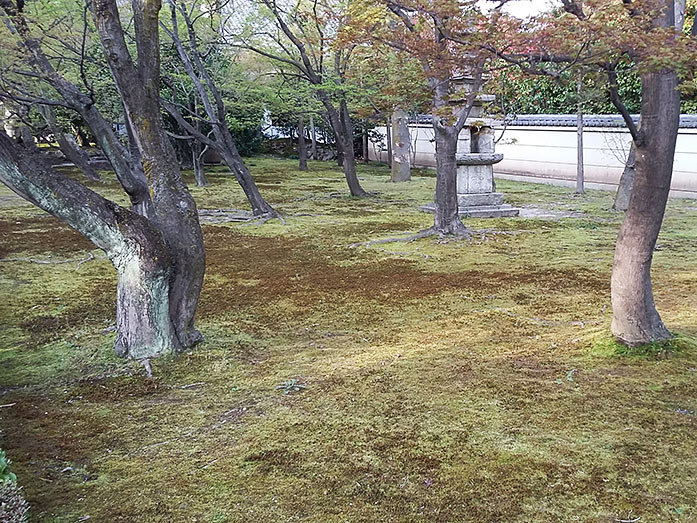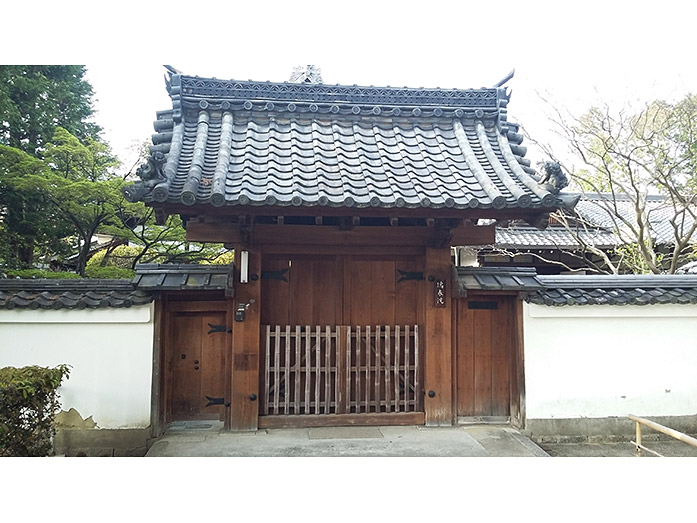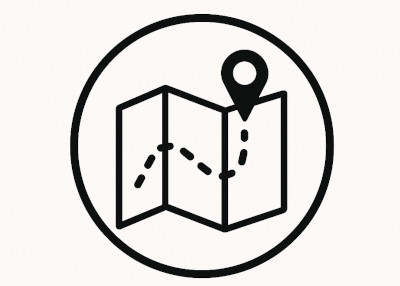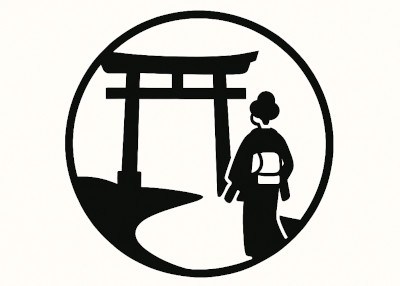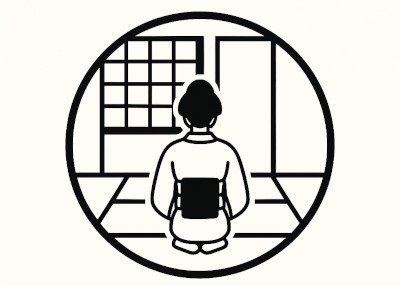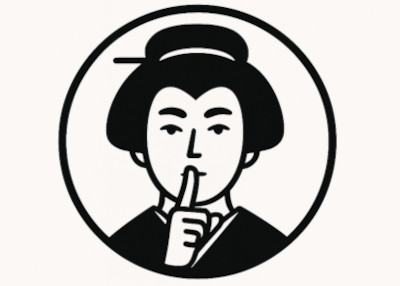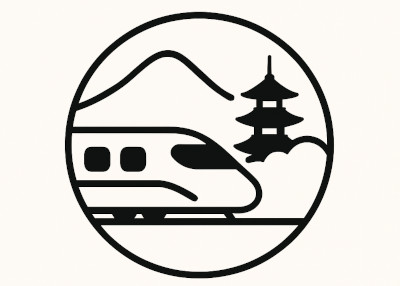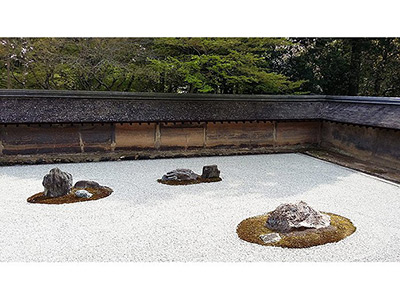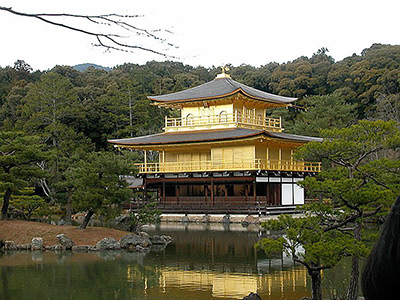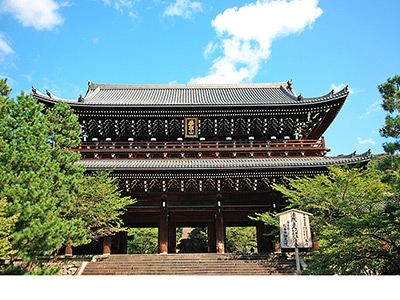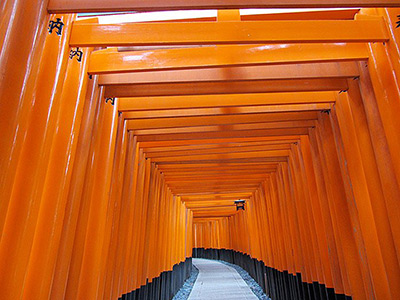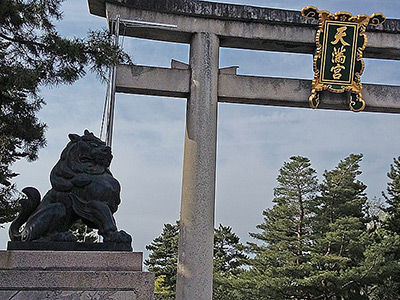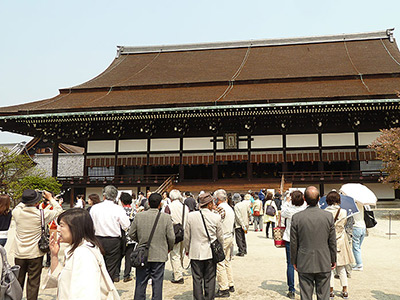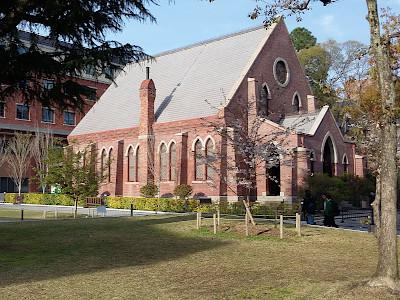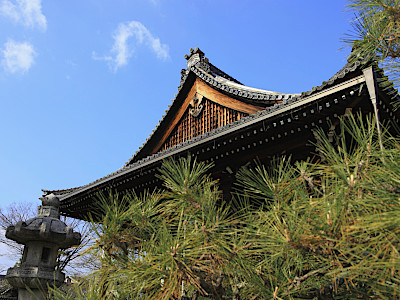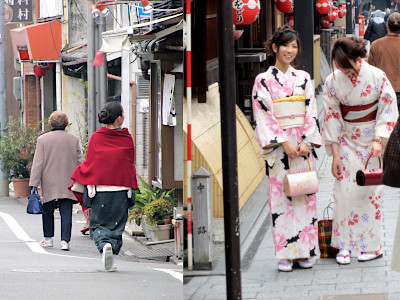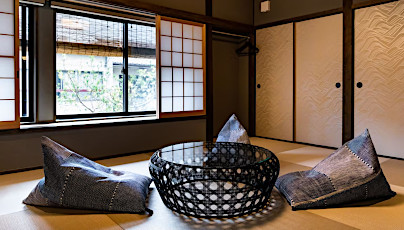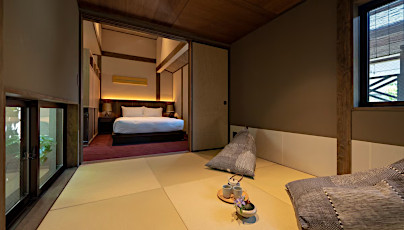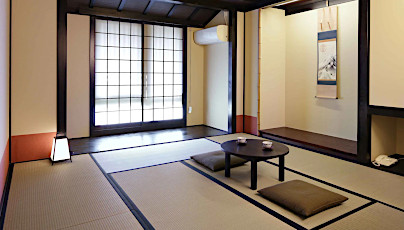Shokokuji Temple in Kyoto
This post can contain affiliate links, which means that we may receive a small commission if you make a purchase using these links.
Facts & Figures
Shokokuji belongs to the Five Great Zen Temples of Kyoto (Kyoto Gozan), which are Tenryu-ji, Nanzen-ji (Supervisor Role), Kennin-ji, Tofuku-ji, and Manju-ji. Only Tenryu-ji is ranked above Shokokuji. The temple is the headquarters of the Shokokuji School of the Rinzai sect of Buddhism and includes over 100 sub-temples within Japan.
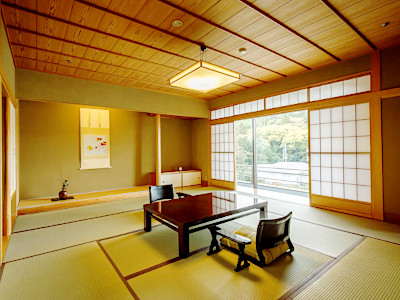 Best Places to Stay in Kyoto >
Interesting to know that the famous Ginkakuji (Temple of the Silver Pavilion) and Kinkakuji (Temple of the Golden Pavilion) are part of the sub-temples. When you enter the temple grounds you will find there the huge and impressive Dharma Hall (Hatto).
It is the oldest Buddhist Lecture Hall in Japan. Important: Most of the buildings are not open to the public. There will be announcements on their website for special exhibitions. Right now 13 buildings are part of the Shokokuji Temple complex, like the the Kitchen and Living Quarters (Kuri), Founder’s Hall (Kaisando), and Abbot’s Quarters (Hojo).
Best Places to Stay in Kyoto >
Interesting to know that the famous Ginkakuji (Temple of the Silver Pavilion) and Kinkakuji (Temple of the Golden Pavilion) are part of the sub-temples. When you enter the temple grounds you will find there the huge and impressive Dharma Hall (Hatto).
It is the oldest Buddhist Lecture Hall in Japan. Important: Most of the buildings are not open to the public. There will be announcements on their website for special exhibitions. Right now 13 buildings are part of the Shokokuji Temple complex, like the the Kitchen and Living Quarters (Kuri), Founder’s Hall (Kaisando), and Abbot’s Quarters (Hojo).
- Shokokuji-ji Jotenkaku Museum:
- Opening Hours - 10:00 am to 5:00 pm
- Closed - end of the year, New Year (shogatsu)
- Admission Fee - 600 yen (Adults), 400 yen (University Students), 300 yen (Junior/Senior High School Students), 200 yen (Elementary School Students)
History
The construction of Shokokuji started in 1382 during the Muromachi Period (1336 - 1573) by the order of Shogun Ashikaga Yoshimitsu (1358 - 1408). It took till 1392 to finish the project. Unfortunately, the whole temple complex burned down just 2 years later. The reconstruction afterward was supported by Yoshimitsu. Shokokuji was destroyed many times during its long history (in 1394, 1425, 1467 - Onin War, 1549 - Tembun Uprising, 1788 - Great Temmei Fire). The last major fire happened in 1788 where only the Dharma Hall (Hatto) and the Imperial Gate (Chokushimon) survived. Unfortunately, not all structures were rebuilt afterward like the Buddha Hall and Sanmon Gate.
Location

Shokokuji is located north of the Imperial Palace in Kyoto and Doshisha University.
Address: 701 Shokokuji Monzen-cho, Kamigyo-ku, Kyoto 602-0898
How to get to Shokokuji Temple?
- 5min walk from Imadegawa Station served by Karasuma subway line
- Doshisha-mae stop served by bus nr. 4, 102, 201, 203 and 17
Sightseeing spots
Top:
Jotenkaku Museum - A great place to learn more about the history of the Muromachi Period. On display are important collections of treasures and cultural assets from Shokokuji, Ginkakuji, Kinkakuji, and other temples. Many of those exhibition items are considered Important Cultural Properties or National Treasures.
Hatto (Dharma Hall) - The Buddhist Lecture Hall, an Important Cultural Property, was reconstructed in 1605. Toyotomi Hideyori (1593 - 1615) financed the project. It is the oldest Dharma Hall in Japan and a great example of Zen-style architecture during the Muromachi Period (1336 - 1573). Tourists can clap their hands under the dragon painting (Naki-Ryu) on the ceiling by artist Kano Mitsunobu to hear the resonating sound. It is possible to visit the hall during some special events in spring or autumn. Btw the Kennin-ji Temple in Kyoto displays also a huge Twin Dragons ink painting on the ceiling by artist Koizumi Junsaku (1924 – 2012).
Shoro Belfry - The bell tower was rebuilt in 1844.
Choku-mon - The gate is dating back to 1797. The Kyoto prefectural government gave it the status of a Tangible Cultural Property.
Chokushimon (Imperial Envoy Gate) - This gate opens only during visits of the Emperor.
Kitchen and Living Quarters (Kuri Kojakuin) - In 2007 the Kyoto prefectural government gave this building the status of a Tangible Cultural Property.
Festival & Events in Kyoto (dates can change without notice)
April
Miyako Odori (1st - 31th)
The traditional annual spring dance of the Kyoto district Gion Kobu performed by Geiko and Maiko is a must-see on your Kyoto visit. Don't miss the most popular dances the Miyako Odori "Cherry Blossom Dances" or "Dances of the Old Capital" at the Gion Kobu Kaburenjo Theater (located close to Gion Corner).
May
Aoi Matsuri (15th)
The highlight of this festival is a large parade from the Imperial Palace through the Shimogamo Shrine to the Kamigamo Shrine. More than 500 people wearing aristocratic costumes from the Heian Period (794 - 1185). The Aoi Matsuri belongs with the Gion Matsuri and Jidai Matsuri as the three most famous festivals in Kyoto.
July
Gion Matsuri (whole month)
The month of July is full of different events like the Yoiyama - Kyoto's Magical Night (locals in kimonos look at the giant Gion floats the day before the parade) or the famous Yamaboko Junko (float procession on the 17th of July).
October
Jidai Matsuri ("Festival of Ages") (22nd)
People celebrate with a large parade between Imperial Palace to Heian Shrine the anniversary of the foundation of Kyoto. App. 2000 participants wearing historical costumes from different time periods. Enjoy this great festival which lasts around 2 hours.
November
Buildings open for the public at Shokokuji temple complex (1st - 10th)
Within a short period of time the Lecture Hall (Hatto), Main Hall (Hondo), Founder's Hall (Kaisando) and Zuishun-in sub-temple are open for the public in November.
Where to stay in Kyoto?
Book your Flight Tickets and Rental Car for your Japan trip
Day trips from Kyoto:
Travelers who viewed Shokokuji Temple viewed also:
Top rated - Best Machiya Houses in Kyoto
THE MACHIYA Ebisuya, 192 Ebisuya-cho Shimogyo-ku, Kyoto 600-8062
This 3-star guesthouse got an excellent rating. All 30 individually furnished rooms offer free WiFi, air conditioning, bathrooms incl. toilets, fridges, 40-inch flat-screen TVs, and more. THE MACHIYA Ebisuya is located in central Kyoto.
View on Expedia.com
This 3-star guesthouse got an excellent rating. All 30 individually furnished rooms offer free WiFi, air conditioning, bathrooms incl. toilets, fridges, 40-inch flat-screen TVs, and more. THE MACHIYA Ebisuya is located in central Kyoto.
View on Expedia.com
The Machiya Kazahaya, 570-6 Kazahayacho, Shimogyo-ku, Kyoto, Kyoto, 600-8475
The Machiya Kazahaya offers for all guest rooms free WiFi, air conditioning, safes, bathrooms with toilets, refrigerators, and much more. Enjoy also the beautiful Japanese Garden. Guests gave this property the rating - Exceptional.
View on Expedia.com
The Machiya Kazahaya offers for all guest rooms free WiFi, air conditioning, safes, bathrooms with toilets, refrigerators, and much more. Enjoy also the beautiful Japanese Garden. Guests gave this property the rating - Exceptional.
View on Expedia.com
Kyomachiya Ryokan Sakura Urushitei, 425 Kichimonjicho, Shimogyo-ku, Kyoto, 600-8069
This beautiful 3-star guesthouse offers 32 rooms with free WiFi, air conditioning, bathrooms incl. showers and toilets, refrigerators, and much more. Enjoy also the relaxing indoor public bath (no minerals). Guests gave this property the rating - Wonderful.
View on Expedia.com
This beautiful 3-star guesthouse offers 32 rooms with free WiFi, air conditioning, bathrooms incl. showers and toilets, refrigerators, and much more. Enjoy also the relaxing indoor public bath (no minerals). Guests gave this property the rating - Wonderful.
View on Expedia.com

